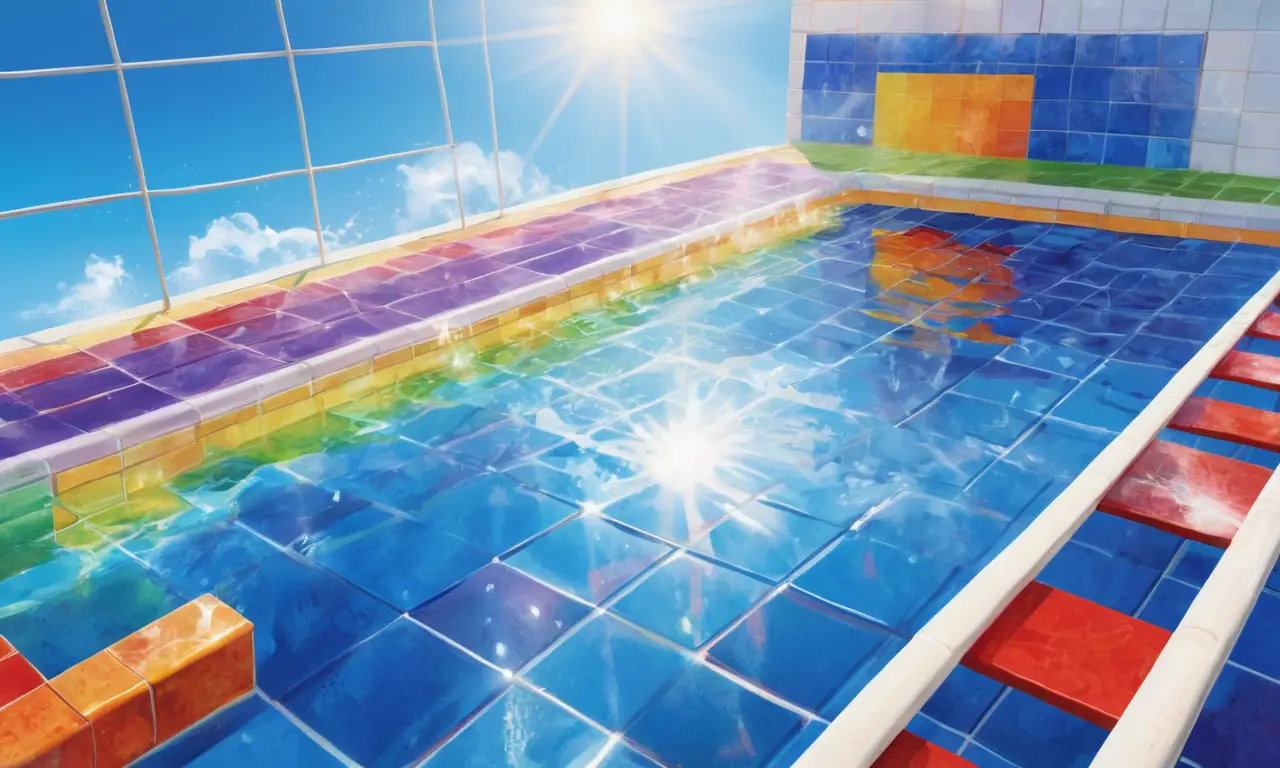Have you ever wondered why swimming pools always seem to be a brilliant shade of blue? It’s not just a matter of aesthetics; the color is actually a result of some fascinating scientific principles. This article will delve into the reasons behind why are swimming pools blue and explore the physics that create this captivating visual effect.
From understanding how light interacts with water molecules to exploring the concept of selective absorption, we’ll uncover the science behind the mesmerizing blue hue of swimming pools. Get ready to dive into a world of color and light as we unravel the mystery of pool blues.
Why Swimming Pools Are Blue
The vibrant blue color of swimming pools is not an inherent property of water itself. Instead, it’s a result of how water interacts with light. When sunlight hits the surface of a swimming pool, certain wavelengths of light are absorbed by the water molecules while others are reflected back to our eyes. This selective absorption and reflection create the illusion of blue.
The human eye is particularly sensitive to blue light, which contributes to the perceived color of the pool. While other colors might be present in the sunlight, the blue wavelengths are more readily scattered and reflected by the water, making them dominant in our perception.
Light Absorption and Reflection

Light is made up of electromagnetic waves that travel at different wavelengths. When light interacts with matter, some wavelengths are absorbed while others are reflected or transmitted. The amount of absorption depends on the properties of the material and the wavelength of the light.
Water molecules have a unique ability to absorb longer wavelengths of light, such as reds, oranges, and yellows, more effectively than shorter wavelengths like blues and greens. This selective absorption is what gives swimming pools their characteristic blue color.
Selective Absorption
Selective absorption is the process by which certain wavelengths of light are absorbed more readily than others by a material. In the case of water, it preferentially absorbs longer wavelengths of visible light, leaving shorter wavelengths to be reflected back.
This phenomenon occurs because the energy levels within water molecules correspond more closely with the energy of shorter wavelengths of light. When a photon of light interacts with a water molecule, it can be absorbed and transferred to the molecule’s electrons, causing them to jump to higher energy levels.
Wavelengths of Light

Visible light is a small portion of the electromagnetic spectrum that humans can see. It ranges in wavelength from approximately 400 nanometers (violet) to 700 nanometers (red).
Shorter wavelengths correspond to colors like blue and violet, while longer wavelengths correspond to colors like orange and red. The human eye perceives these different wavelengths as distinct colors.
The Science Behind Pool Color
The combination of light absorption, reflection, and our perception of color creates the illusion of a blue swimming pool. When sunlight hits the water, the longer wavelengths are absorbed, leaving primarily the shorter wavelengths to be reflected back.
Our eyes are more sensitive to blue light, so we perceive the reflected light as blue. The depth of the pool also plays a role, as deeper pools tend to appear darker blue because more light is absorbed before it reaches our eyes.
Conclusion
The next time you gaze into a shimmering blue swimming pool, remember that there’s a fascinating scientific explanation behind its color. It’s not just about aesthetics; it’s a testament to the intricate interplay of light, water, and human perception.
Understanding why is swimming pool water blue allows us to appreciate the beauty of this everyday phenomenon and delve deeper into the wonders of science that shape our world.
